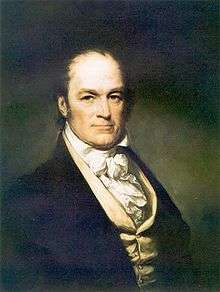Acting Vice President of the United States

Acting Vice President of the United States is an unofficial designation that has occasionally been used when the office of vice president was vacant.[1][2][3]
The president pro tempore of the United States Senate assumes the role of presiding officer over the Senate in the event that the vice presidency is rendered vacant either by death, resignation, removal from office or succession to the presidency. Under the 1792 Act of Succession, in the absence of a vice president, the president pro tempore was next in line for the powers of the presidency.
Historically, some have referred to the president pro tempore under these circumstances as "acting vice president."[1][2] However, no such office exists in law or tradition. No person who could ever have been regarded as "acting vice president" has ever succeeded to the powers and duties of the presidency, even in an acting capacity. Lafayette S. Foster and Benjamin Wade would have been the closest to become president. Following the adoption of the 1886 Act of Succession, the president pro tempore of the Senate was no longer next in line for the presidency after the vice president.
Nonetheless, James Eastland, senator from Mississippi, was referred to as "acting vice president" twice while he was president pro tempore in the 1970s, during periods of a vacancy in the vice presidency.[4] The first occurred following the resignation of Vice President Spiro Agnew, prior to the appointment of Gerald Ford to replace him, and the second occurred when Ford became president, vacating the vice presidency, before Nelson Rockefeller was confirmed as his replacement. During both these periods, however, Speaker of the House Carl Albert was first in the line of succession to the presidency under the Presidential Succession Act of 1947, ahead of Eastland.
In 1964, presidential advisor Richard Neustadt, proposed the creation of a statutory office of acting vice president in hearings before the Subcommittee on Constitutional Amendments of the Senate Judiciary Committee.[5] The proposal was never adopted.
See also
References
- 1 2 U.S. Senate: Art & History Home> John Tyler, Tenth Vice President (1841)
- 1 2 U.S. Senate: Art & History Home > Sculptures > Lafayette Foster
- ↑ 138 Cong Rec S 10316, Text of a letter by Dr. R. Krasner concerning the relationship between Congress and the Secretary of the Navy, which appeared in Roll Call on July 16, 1992. Entered into the Congressional Record by Senator Robert Byrd.
- ↑ "Mississippians in Washington". Stennis Center for Public Service. Archived from the original on September 20, 2005. Retrieved 2007-01-31.
- ↑ Presidential Inability and Vacancies in the Office of Vice President: Hearings before the Subcomm. on Constitutional Amendments of the Senate Comm. on the Judiciary, 88th Cong., 2d Sess. 166 (1964) (statement of Professor Richard Neustadt proposing statutory office of Acting Vice President)